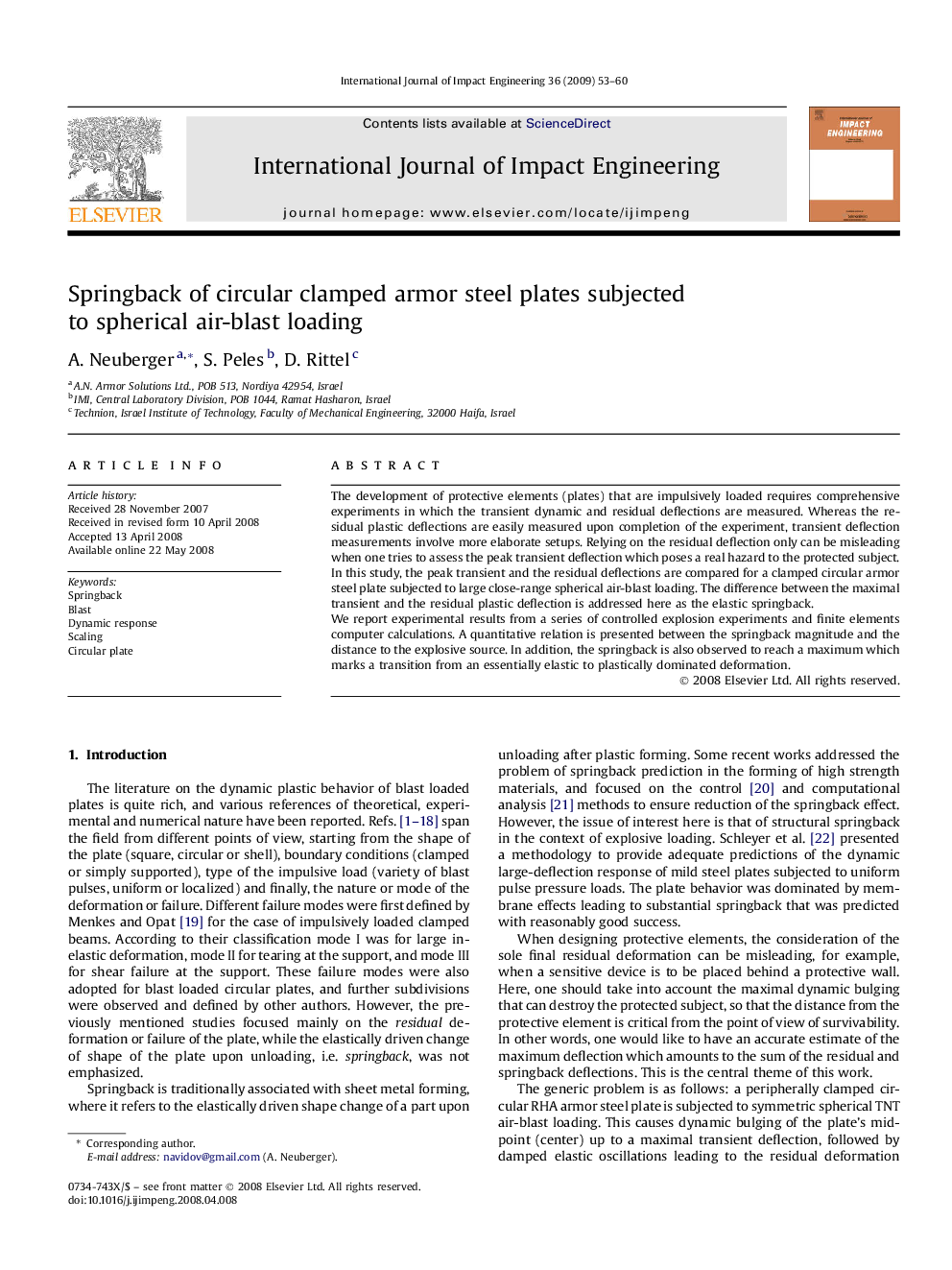| Article ID | Journal | Published Year | Pages | File Type |
|---|---|---|---|---|
| 779724 | International Journal of Impact Engineering | 2009 | 8 Pages |
The development of protective elements (plates) that are impulsively loaded requires comprehensive experiments in which the transient dynamic and residual deflections are measured. Whereas the residual plastic deflections are easily measured upon completion of the experiment, transient deflection measurements involve more elaborate setups. Relying on the residual deflection only can be misleading when one tries to assess the peak transient deflection which poses a real hazard to the protected subject. In this study, the peak transient and the residual deflections are compared for a clamped circular armor steel plate subjected to large close-range spherical air-blast loading. The difference between the maximal transient and the residual plastic deflection is addressed here as the elastic springback.We report experimental results from a series of controlled explosion experiments and finite elements computer calculations. A quantitative relation is presented between the springback magnitude and the distance to the explosive source. In addition, the springback is also observed to reach a maximum which marks a transition from an essentially elastic to plastically dominated deformation.
